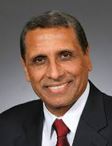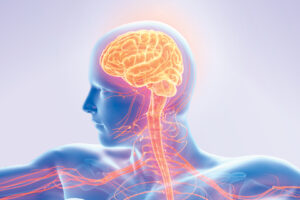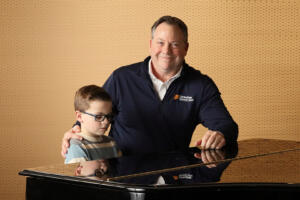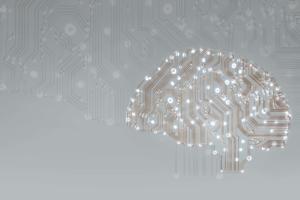When it comes to modern medicine and healthcare, the only thing that stays the same is – well, quite simply, change. Whether it’s the technology that allows us to peer deep into the body or the medicines and treatments that improve the lives of those with chronic diseases, the pace of change over the years has been profound.
This is particularly true in the case of electroconvulsive therapy (ECT), a procedure for severe depression and other progressive mental health disorders that is arguably the safest, fastest and most effective when medications or alternative treatments prove ineffective or intolerable. Many call it the “gold standard” therapy, with up to 90 percent of such patients experiencing dramatic functional improvement. This is all the more inspiring when you consider that while ECT is a somewhat common treatment in modern psychiatry, there’s still significant education to be done in combating negative misconceptions stemming from how the procedure was administered in the past.
Safe and controlled procedure has come a long way from the past
It’s estimated that over 40 million Americans suffer from depression. Many see therapists and take medication. But for those with severe depression episodes – as well as severe mania, bipolar disorders, psychosis and catatonia – ECT is generally viewed as the most viable treatment modality.
How does it work? ECT involves a brief electrical current lasting a fraction of a second to six seconds. This produces a controlled seizure within the brain of up to one or two minutes. The stimulus is set forth only after the patient is asleep, sedated via general anesthesia, and a muscle relaxer is given to greatly reduce muscular response. The ECT procedure is pain free and takes about 10-15 minutes from beginning to end, with an electroencephalogram (EEG) monitoring major brain activity throughout.
This is quite a contrast to decades ago when ECT, then more commonly referred to as “shock therapy,” was not medically managed quite so well. Individuals were often given high doses of electricity without anesthesia, were prone to wild body movement, and susceptible to long-term memory loss. Over the years, the media has portrayed ECT as a quick fix to “shock” away depression, and those images and misperceptions unfortunately remain for many.
Every day we are committed to educating potential and current patients about just how far ECT has progressed. But the stigma of the past remains a barrier for some. We’ve had patients who underwent ECT many years ago and remain suspect of brain stimulation techniques. We remind them. We teach them. Every year medicine changes for the better and every year ECT treatment becomes safer and more effective.
A dramatically improved quality of life in just days to weeks
We’ve seen rapid improvement in patients who first visit us for a consultation exhibiting severe symptoms. Many are not eating, losing weight and uninterested in life. Some have suicidal tendencies and are detached from reality. Others are hopeless, depressed and practically confined to bed. Today, after a normal course of six to 12 treatments at a rate of three per week, these same individuals are now leading happy and active lives. Many patients notice an improvement in symptoms after two to three treatments. Response to antidepressant medications, in comparison, can take several weeks or more.
Recently, I treated a middle-aged man who was experiencing severe lethargy. He was severely depressed and withdrawn from daily activities. Our team sat with him and his wife, explained ECT, gained their confidence, and set out a treatment schedule. Within a few short weeks, he was back on his feet with a far better quality of life, and is now even travelling overseas. According to his wife, “he is now enjoying the little things in life. These treatments have proven to be a life saver.”
Remarkable progress, though still a mystery in some ways
ECT is a sound treatment modality for adults of all ages at our institution. In many cases, ECT is used during pregnancy, when medications can’t be taken because they might harm the developing fetus, or with older adults, who can’t tolerate drug side effects. Still, it’s not for everyone.
Once a mental health professional has prescribed ECT, the patient must first undergo a thorough psychiatric assessment and physical examination, including medical history, blood work, chest X-ray, electrocardiogram (ECG) and other lab tests, as necessary. We engage in an open dialogue to explicitly review the risks and benefits. With full consent, we proceed.
When ECT treatment is provided at the right time in the right way it can be a truly life-saving experience. We are very clear, however, that ECT can produce side effects such as headache, muscle soreness and nausea. Because of the anesthetic drug and the effects of having had a seizure, patients will temporarily feel somewhat groggy. Some patients also may temporarily experience short-term memory loss, which may clear in a few days or few weeks. In comparison to life-threatening risks of mental illness, though, treatment benefits far outweigh these side effects.
Why is ECT so successful? No one knows for certain how ECT helps treat severe depression and other mental illnesses. We still have much to learn about how the brain works. What is known is that the seizure caused by ECT releases chemicals in the brain. These chemicals, called neurotransmitters, deliver messages from one brain cell to another. The release of these chemicals makes the brain cells work better. As a result, depressive disorder and other psychiatric condition symptoms can be overpowered by this improved brain cell function.
State-of-the-art ECT treatment at CentraState Medical Center
Behavioral Health Services at CentraState Medical Center offers inpatient and outpatient ECT in our state-of-the-art ECT Treatment Suite. ECT is administered by our team of doctors who have specialized training and experience in this type of treatment, and staffed by anesthesiologists, nurses and our technical team. ECT treatments are administered on Mondays, Wednesdays and Fridays.
 Dr. Moustafa Shafey is a board-certified psychiatrist and forensic examiner. He serves as chief of the medical and dental staff and director of the Electroconvulsive Therapy (ECT) department at CentraState Medical Center. Dr. Shafey can be reached by calling 866-CENTRA7.
Dr. Moustafa Shafey is a board-certified psychiatrist and forensic examiner. He serves as chief of the medical and dental staff and director of the Electroconvulsive Therapy (ECT) department at CentraState Medical Center. Dr. Shafey can be reached by calling 866-CENTRA7.





